Orthodontic treatment is the process of straightening of crooked and crowded teeth with the help of braces and wires.
At Aggarwal Dental Clinic ,services of an Orthodontist Dr. Anil Sharma (M.D.S.) are available
We use both the metallic braces as well as white tooth colored braces as per the patient’s desire.
All types of patients from different age groups are routinely treated at our clinic. Age is not a barrier to Orthodontic treatment. The treatment can be done even in a 40 yr old patient. The only requirement is healthy bone and periodontium ( Tissue around teeth )
Oral Care and braces
Caring for your teeth and gums during orthodontic treatment
Crooked or crowded teeth may cause uneven wear of tooth surfaces or jaw problems that may lead to complications later in life. They can also be difficult to clean properly, which makes them prone to tooth decay and gum diseases.
So, while you’re wearing braces, remember that the success of your treatment is affected by how well you care for your teeth and gums. Good oral care at home involves effectively removing plaque from your teeth, gums and braces every day. Not only will it keep your treatment time on course, but it will also contribute to the continued health of your teeth and gums.
Frequently asked questions about orthodontic treatment and braces
Who needs orthodontic treatment?
Not everyone’s teeth are perfectly straight. In fact, many people have crooked or overcrowded teeth. If your dentist thinks your teeth need straightening, he or she may refer you to an orthodontist, a dentist who specializes in this type of treatment.
During treatment, fixed braces or a removable appliance may be worn to gradually move teeth to their correct position in the mouth.
At what age can orthodontic treatment start?
While it is most common during childhood and adolescence (from around age eight and up), an increasing number of adults today are also opting for orthodontic treatment.
How long does the treatment take?
It varies, but it may take from 18 to 30 months to complete. For adults, treatment may take a little longer because the facial bones have stopped growing. But whatever your age, keeping your teeth and gums healthy during orthodontic treatment will help keep treatment time on track.
How do I keep my teeth and gums healthy?
The key to healthy teeth and gums is proper plaque removal every day. Plaque is the sticky coloriess film of bacteria that is constantly forming on your teeth and, left to build up, is one of the main causes to tooth decay and gum disease. Follow these simple guidelines and you’ll be off to a great start;
- Brush your teeth and braces at least three times a day (and especially after eating).
- Clean between teeth at least once daily and definitely just before you go to bed.
- Use a fluoride toothpaste, fluoride is proven to help prevent cavities.
- Use a fluoride mouth rinse at least once daily to help reduce the risk of cavities.
- Try to carry your toothbrush and floss with you at all times so that you can clean your teeth even when you are not at home.
How do I clean all areas of my mouth while wearing braces?
At first, doing a good job removing plaque from your teeth and along the dumline may seem difficult with braces. But keep at it: with a bit of practice, it will get easier! following these tips can also help:
- First, take off any elastic bands and removable parts (like headgear).
- One recommended brushing method is to place your brush at 45° angle to the gum. Apply gentle pressure as you brush with a short back-and-forth motion, cleaning each tooth individually for about 10 seconds.
- Use the same brushing motion on all inner and outer tooth sufaces.
- Don’t forget to brush the chewing surfaces of your teeth and make sure you reach the teeth in the back, too.
- Finish by cleaning around your braces, brushing first from the top and then from the bottom. Brush gently and take care not to break or bend any of the brackets or wires.
Cleaning a removable appliance
After you take the appliance out of your mouth, brush and clean between your teeth in the normal way. Then, using your toothbrush and toothpaste, clean your appliance, rinsing thoroughly with water afterwards.
Also, make sure that you gently brush the gum areas that are covered by your appliance. This includes the roof of your mouth if you wear the appliance on your top teeth.
How often should I clean my braces?
It is vital that you clean your braces every time your brush your teeth. Braces can act as a “plaque trap,” increasing the amount of plaque in your mouth, which in turn can lead to an increased risk of cavities and gum disease.
How do I floss with fixed braces?
Flossing removes the plaque between your teeth and under your gumline areas beyond the reach of your toothbrush. In fact, if you don’t floss, you’re leaving up to 40% of your tooth sufaces untouched and uncleaned.
- Choose a “threading floss” with a siffened end that threads it though the gap between each tooth above the wire for your upper teeth and below the wire for your lower teeth.
- Curve the floss around each tooth in a “C” shape and gently move it up and down the gumline. Unroll a new section of floss as you move from tooth to tooth.
Which products are best for braces?
Orhtodontic toothbrushes have bristles trimmed in a ‘V’ Shape for cleaning above and below the brackets and wire.
Power toothbrushes can remove more plaque than ordinary manual toothbrushes. And some of the newer ones have brushheads specially made for use with braces.
Interdental bushes have very small heads with bristles, perect for cleaning under wires and between teeth. Check with your dentist how your should clean around your braces with this type of brush.
Irrigation devices use a pressurized stream of water (or mouth rinse) to clean around the gumline. Most have lower settings for use on sensitive areas.
An orthodontist may recommend using a combination of home care products in your daily routine.
Do I still need to see my regular dentist?
Yes, your dentist and orthodontist will work together with you to help you do the best job possible in caring for your teeth and gums.
Keep smiling!
Wearing braces requires patience and discipline. However, the result of treatment can be more than just a healthy smile: often, your orthodontist is preventing bigger problems from developing later.
Proper oral care at home is important because it will help keep your treatment time on course an dmight even help reduce it. Furthermore, it will contribute to the long-term health of your teeth and gums.
And your reward? A lifetime of healthy, beautiful smiles!
Othodontic Treatment Case1
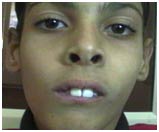
Pre-Treatment Front

Post-Treatment Front
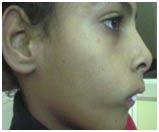
Pre-Treatment Profiel
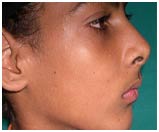
Post-Treatment Profiel
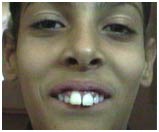
Pre-Treatment Smile
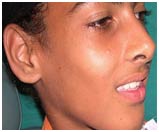
Post-Treatment Smile
Orthodontic Treatment Case2
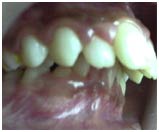
Pre-Treatment
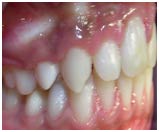
Post-Treatment
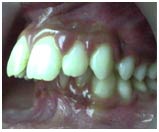
Pre-Treatment
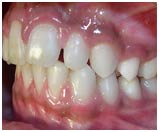
Post-Treatment

Pre-Treatment
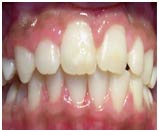
Post-Treatment
Orthodontic Treatment Case3
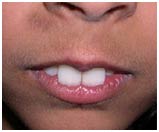
Pre-Treatment
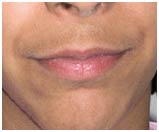
Post-Treatment
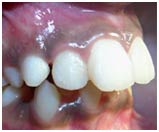
Pre-Treatment
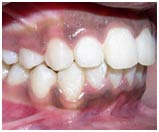
Post-Treatment
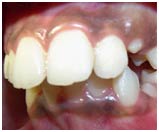
Pre-Treatment
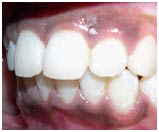
Post-Treatment
